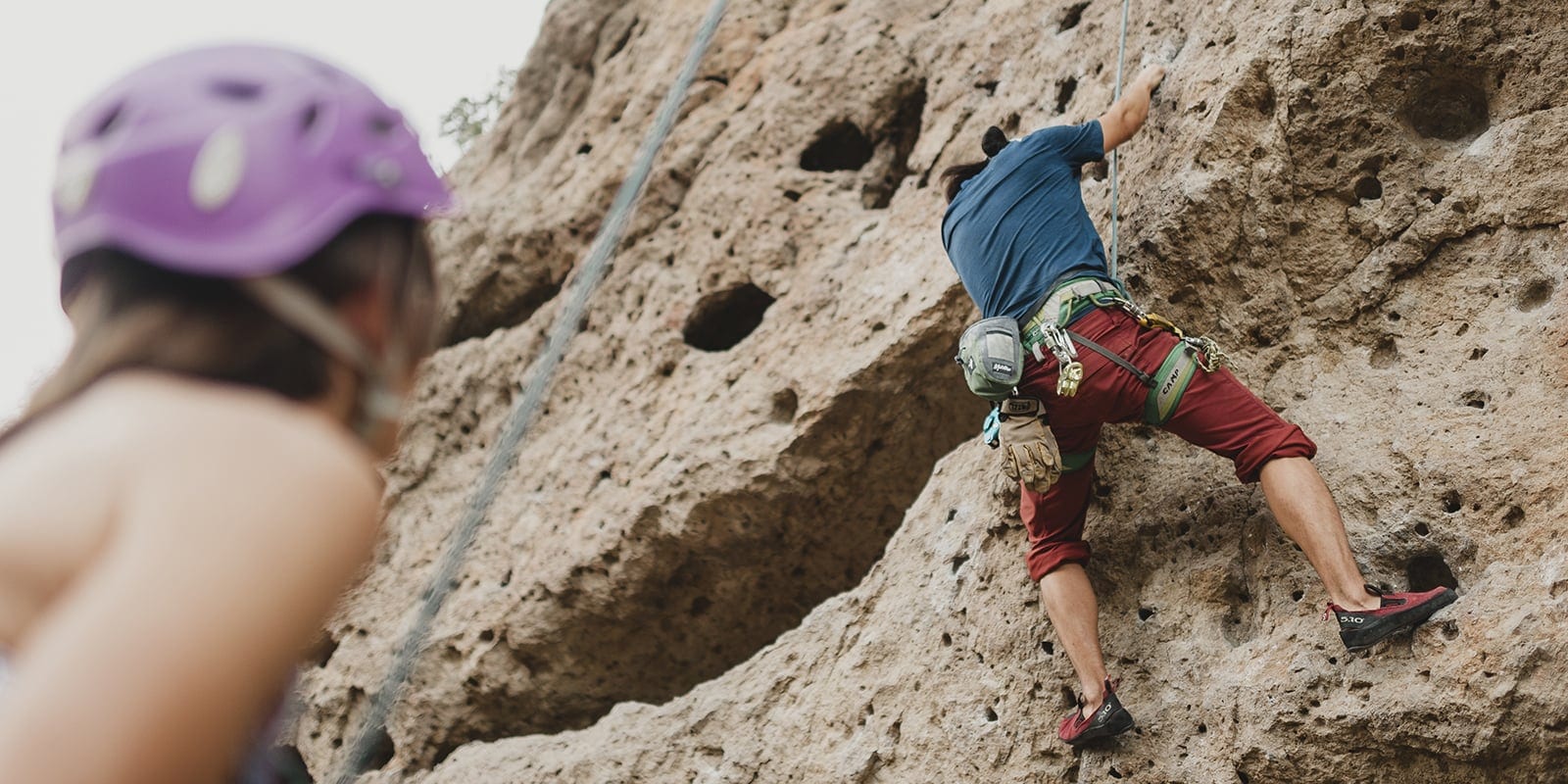The following are standard commands between climber and belayer, from the beginning to the end of a pitch. This example involves a female belayer and a male climber.
Climber: That's me! The belayer above is taking in all the slack rope before putting it into her belay device. The climber calls this when he is tugged by the rope from above, indicating that there is no more rope to take in.
Belayer: Belay on! The belayer is anchored in and has the rope set up through her belay device. She calls this command to let the climber know she's ready to belay.
Climber: Slack! The climber needs extra rope in order to make the first move or to finish taking apart his belay anchor.
Climber: Up rope! The climber no longer needs the slack in the rope. Asks belayer to take it in. (This can be used at any point in the climb to signal to the belayer to take up slack.)
Climber: Climbing! The climber signals that he is ready to start climbing.
Belayer: Climb on! or Climb! The belayer again signals she is ready for the climber.
Climber: Watch me! The climber is making a move in which he might fall. Asking the belayer to be ready to catch him.
Climber: Tension! Same as above.
Climber: Falling! The climber is falling and putting sudden stress on the rope. Belayer should have the rope locked off and be braced for any shock.
Belayer: Halfway! The belayer lets the climber know that he has half the rope's length left to use.
Belayer: Feet-three-oh! four-oh, etc. (30 or 40 feet of rope left.) The belayer lets climber know how many feet of rope are left for him to use.
Climber: Off belay! The climber is tied in to the rock with a personal anchor and no longer needs the belayer.
Belayer: Belay off! The belayer has taken the rope out of the belay device and is no longer watching the climber.
Other situations:
Climber (rappeller): On rappel! Lets people below know to get out of the way of loose rock and to be ready to grab the end of the rope if necessary to stop the rappeller.
Rope! Anyone at the top of a cliff calls this loudly after looking for a clear space below to throw the rope for a rappel or to send the top rope back down.
Rock! Anyone calls this loudly and repeatedly when rock is falling until everyone is out of the way.
Take! Used in climbing gyms by the climber at the top of a route, it asks the belayer to take the climber's weight on the rope and lower him down. Take is not used in traditional climbing since the climber is not lowered, but rather expected to anchor in before being taken off the belay.
At times you'll even be out of hearing range of your climbing partner. Wind, rushing streams and even other climbers in the area can make verbal communication difficult or sometimes impossible.
- Use names to avoid confusion when more than one team is within earshot. For example, "John, on belay!" or "Anne, up rope!"
- Agree on rope signals when voices can't be heard. Some climbing partners have a system of tugs on the rope to signal their intentions. These are sometimes hard to feel on long routes and aren't always totally reliable.
- Use 2-way radios for clear communication on long routes or very windy conditions when you can't hear each other. They can be particularly useful in emergency situations when a lot of information needs to be conveyed back and forth.
- Most importantly, decide on a system with your climbing partner before you leave the ground!
